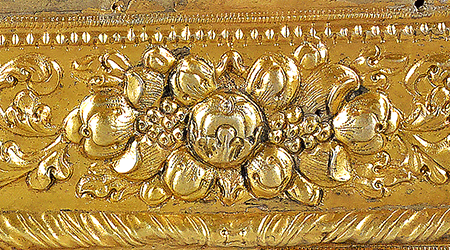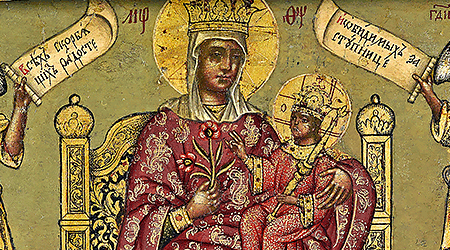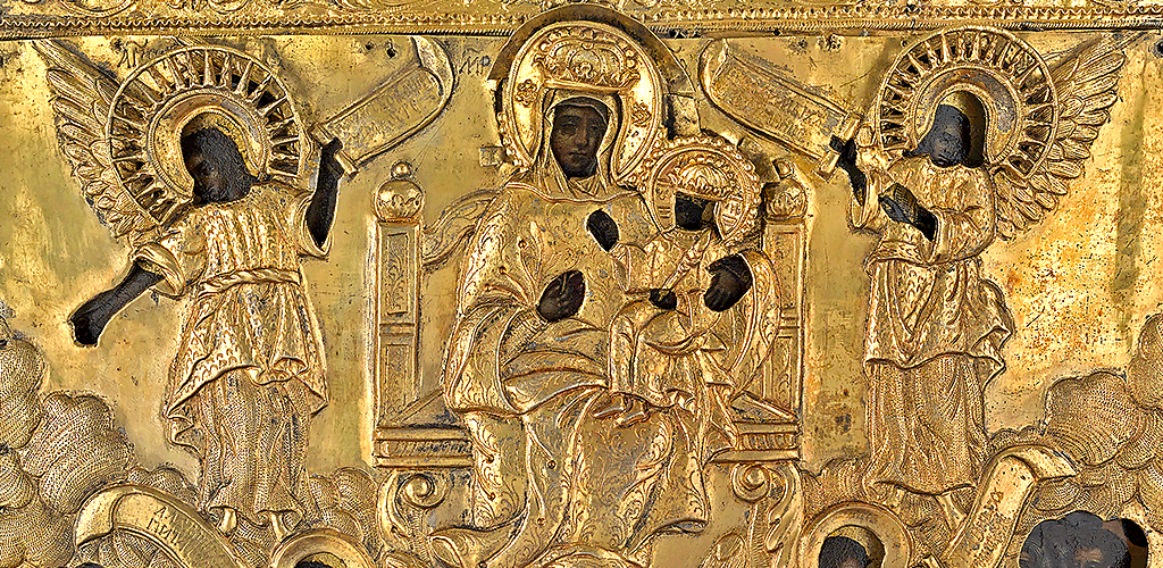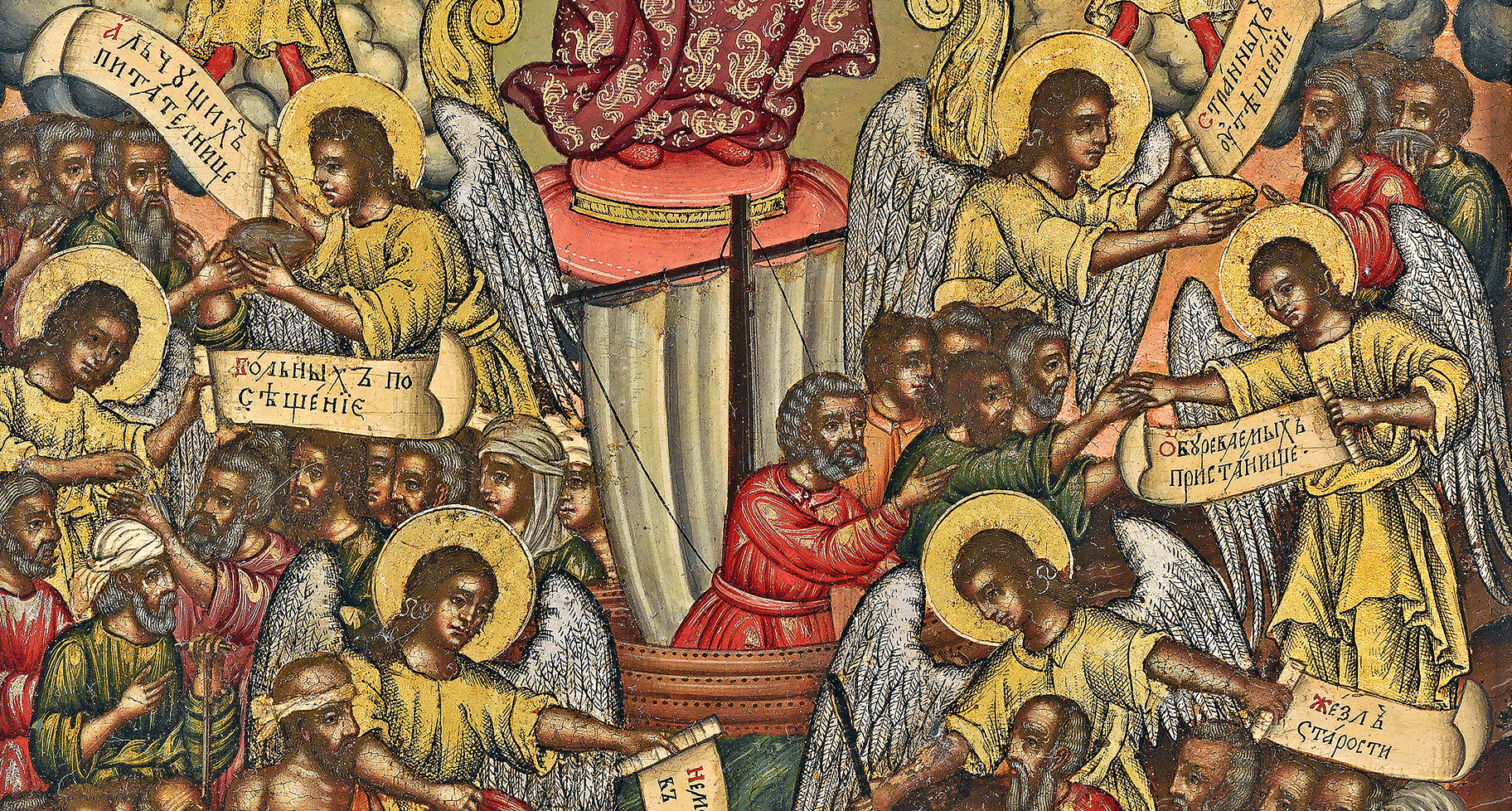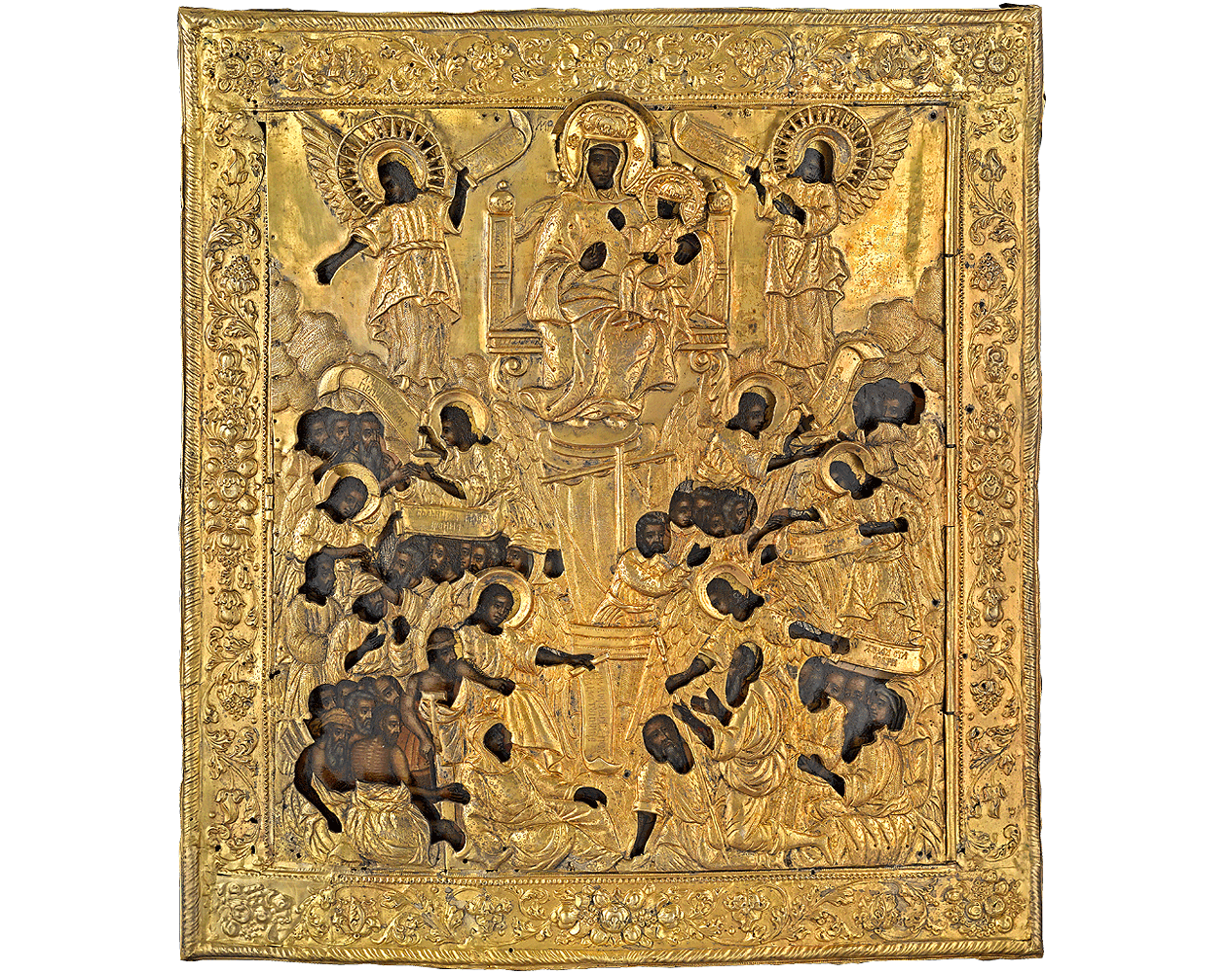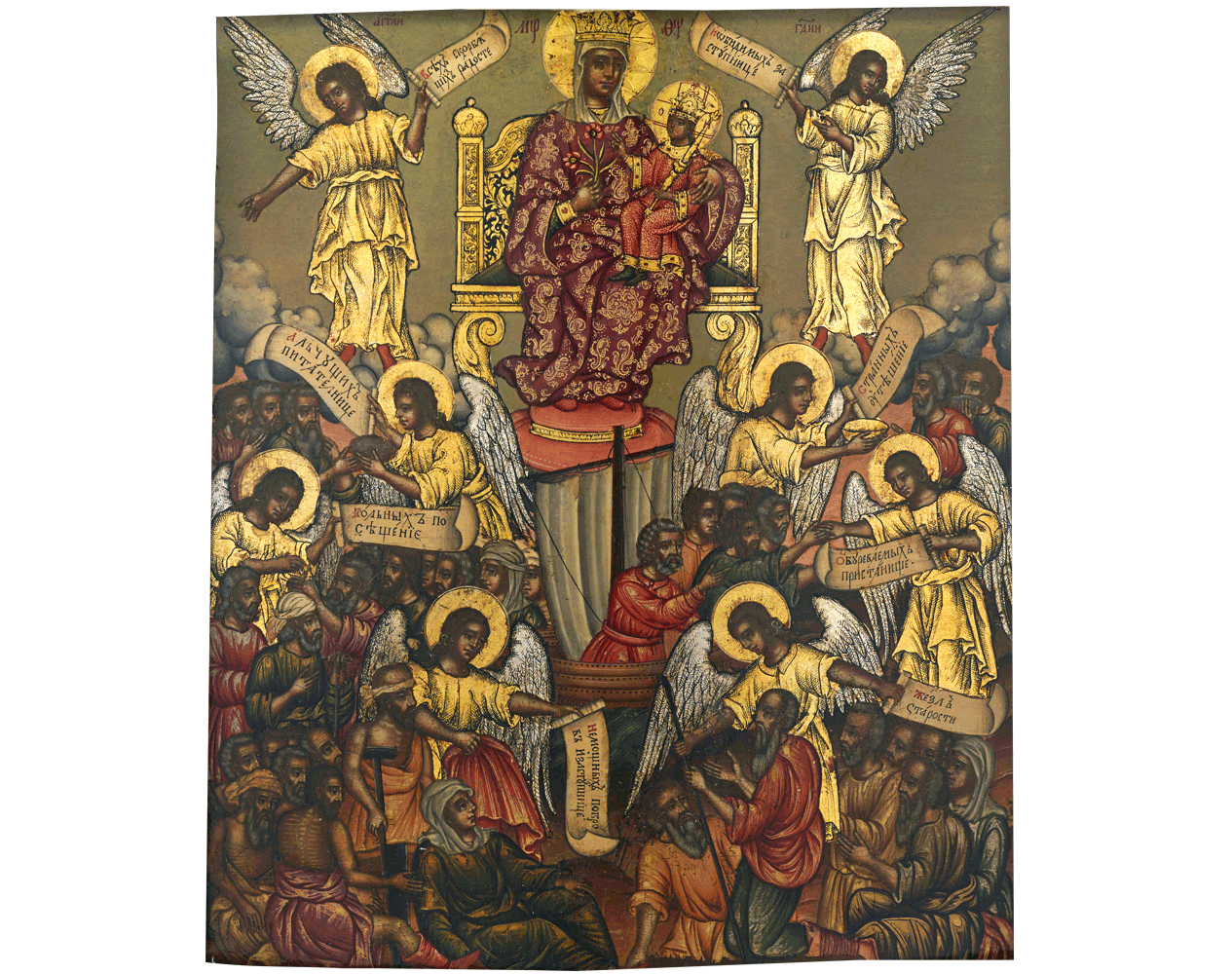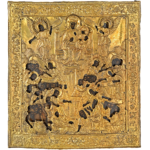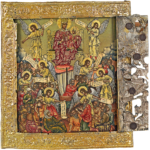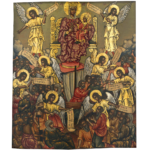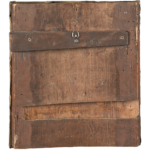The icon is encased in a contemporaneous silver-gilt repoussé and engraved unmarked oklad (silver items dating to the seventeenth century were rarely hallmarked) decorated with floral motif. The upper part of the composition shows the Virgin with the Christ Child, crowned, clothed in a majestic maroon garment threaded with gold. She sits magisterially on an ornate gold and green throne, her son on her lap and flowers in her hands, flanked by two angels. Beneath her feet, more gilded angels administer blessings amongst a crowd of the poor and destitute. The angels’ scrolls read “Cure to the Sick, Vision to the Blind, Respect to the Old, Rest for the Travellers, Protection to the Homeless“.
The style of the icons reflects the school of Simon Ushakov (1626-1686), a leading icon painter of the seventh century who was a great favourite of the Russian royal family. In 1664, he was assigned to the Kremlin Armoury, where he was head of the Imperial Icon Painting Workshop for many years.
“The Mother of God, Joy To Those Who Grieve” was a popular icon, associated with her powers of protection, intercession and healing. The white scrolls read: ‘Cure to the Sick, Vision to the Blind, Respect to the Old, Rest for the Travellers, Protection to the Homeless.’ An icon such as this could be found in most Russian homes.
The subject derives from a miracle which took place on 24 October 1688, when a Moscow woman named Ephimia, suffering from a bleeding ulcer, heard a voice commanding her to pray to the icon of the Mother of God, Joy To Those Who Grieve. Blessed by a priest in the Church of the Transfiguration at Ordynka, Ephimia was immediately cured. The day is commemorated by a festival, and copies of the icon immediately spread throughout Russia. In 1888, another miracle is said to have occurred when the chapel in which a version of the icon was encased was struck by lightning. The icon was the only object to survive the disaster unscathed, and with twelve coins from the poor-box stuck fast to its surface.
